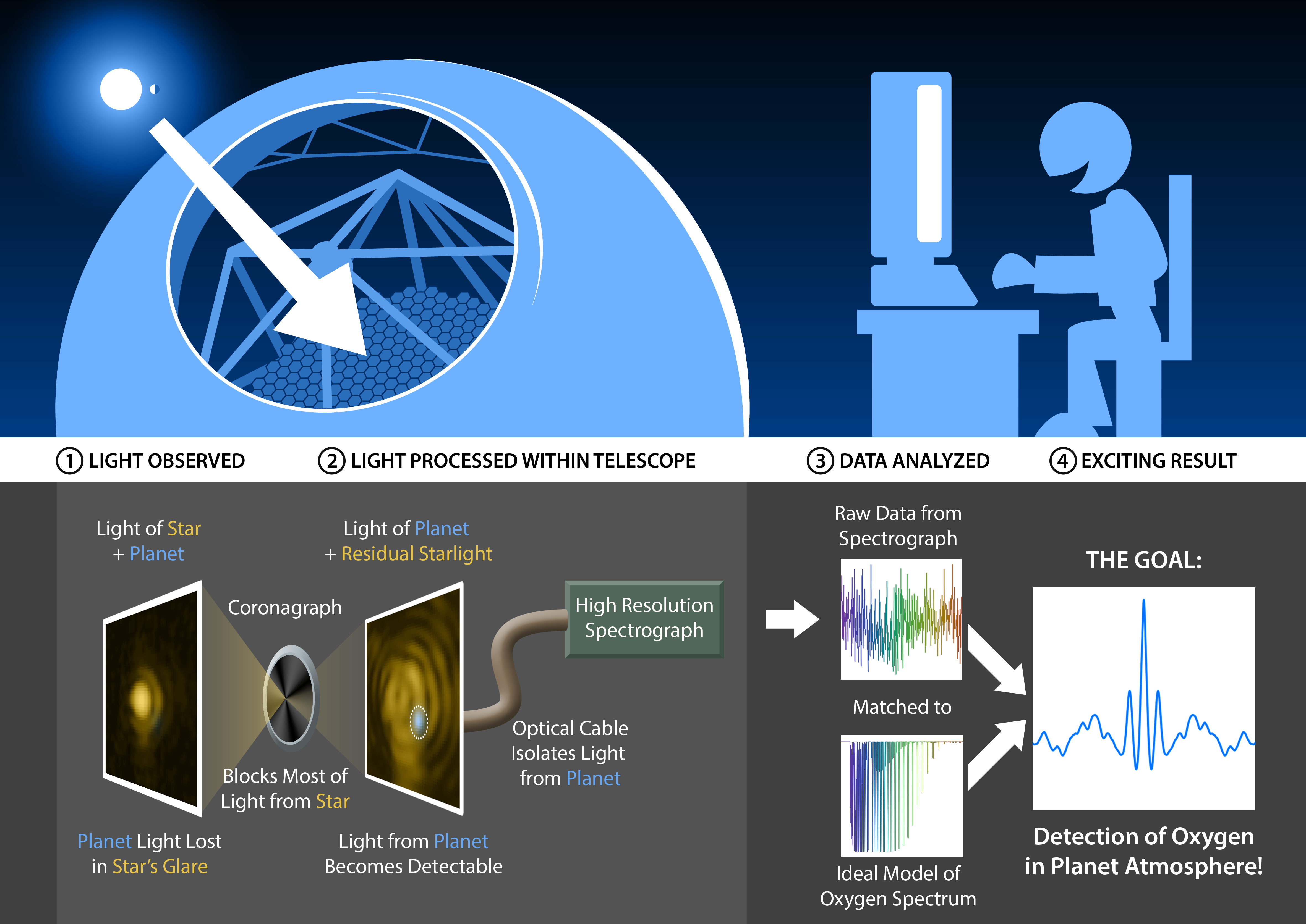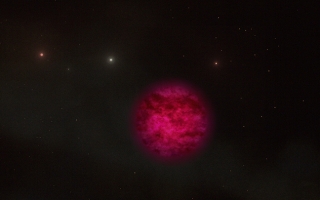High Dispersion Coronagraphy - A Pathway to Characterize Earth-like Planets

Project Description
Out of the thousands of exoplanets detected to date, the few that have been directly imaged are excellent targets for studying orbital configurations and atmospheric chemical compositions. However, direct imaging and characterization faces several technical challenges owing to the small angular separation and high contrast between exoplanets and their host stars. High-contrast imaging (HCI) systems mitigate these effects by suppressing diffracted star light, that may otherwise overwhelm the planet signal, with an extreme adaptive optics system and a coronagraph. Current state-of-the-art high contrast imaging instruments, such as the Gemini Planet Imager at the Gemini South telescope and SPHERE at the Very Large Telescope, are able to achieve better than 1/100000 star light suppression level at a few tenths of an arcsec, which allows for the detection of gas giant planets and brown dwarfs orbiting nearby young stars.
Star light suppression can be further improved by coupling a high-resolution spectrograph (HRS) with a coronagraphic system. In this High Dispersion Coronagraphy (HDC) scheme, the coronagraphic component serves as a spatial filter to separate the light from the star and the planet. The HRS serves as spectral filter taking advantage of differences in spectral features between the stellar spectrum and the planetary spectrum, e.g., different absorption lines and radial velocities (RV).
The HDC technique may be the only viable way of searching for biosignatures in the atmospheres of Earth-like planets using next-generation extremely large ground-based telescopes. The HDC technique technique also provides a way of relaxing very stringent requirement of starlight suppression for space missions aiming at detecting and characterizing terrestrial planets.
Press Release
Inventing Tools for Detecting Life Elsewhere.Astronomy professor's research advances technology looking for signs of alien life

Instrumentation Publications
Mawet et al. Observing Exoplanets with High-Dispersion Coronagraphy. II. Demonstration of an Active Single-Mode Fiber Injection Unit. 2017, ApJ, 838, 92
Carl Coker, Ji Wang, Mawet, Dimitri, Stuart Shaklan Effects of thermal and exozodiacal background on space telescope observations of exoEarths. 2018, SPIE, 10698E, 5G
Garreth Ruane, Ji Wang, Mawet, Dimitri; Jovanovic, Nemanja; Delorme, Jacques-Robert; Mennesson, Bertrand; Wallace, J. Kent Efficient Spectroscopy of Exoplanets at Small Angular Separations with Vortex Fiber Nulling. 2018, ApJ, 867, 143
Science Publications
Ji Wang, Dimitri Mawet, Garreth Ruane, Renyu Hu, Bjorn Benneke Observing Exoplanets with High Dispersion Coronagraphy. I. The scientific potential of current and next-generation large ground and space telescopes. 2017, AJ, 153, 183
Ji Wang, Mawet, Dimitri; Hu, Renyu; Ruane, Garreth; Delorme, Jacques-Robert; Klimovich, Nikita. Baseline requirements for detecting biosignatures with the HabEx and LUVOIR mission concepts. 2018, JATIS, 4, 5001
Ji Wang, Mawet, Dimitri; Fortney, Jonathan J.; Hood, Callie; Morley, Caroline V.; Benneke, Bjorn Detecting Water in the Atmosphere of HR 8799 c with L-band High-dispersion Spectroscopy Aided by Adaptive Optics. 2018, AJ, 156, 272